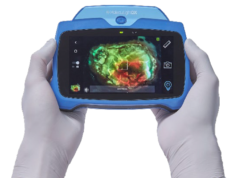
With healthcare systems around the world facing the most severe global health crisis in a generation, wound care is one of many areas that could be seriously affected. As iWounds News editor-in-chief William J Ennis explains, the commonality between wound patients and the population most at risk in the midst of COVID-19 will have major implications on the practice of wound care, requiring an increase in clinical efficiency and innovation.
I was initially slated to discuss the outlook for wound care in 2020, but the emergence of a new threat known as coronavirus has caused me to rethink my topic. This past December, in Wuhan, China, an outbreak was initially reported: now, cases have been confirmed on six continents and in more than 100 countries.
Although the disease, known as COVID-19, is mild in most cases, the elderly and those with underlying comorbid conditions can have severe complications. The death rate is about 1.4% overall, however higher rates are noted in the elderly. In many cases, those are our wound care patients! Having officially graduated from epidemic status to a pandemic, it is of the utmost urgency that we begin to organise and prepare as our wound care patients become exposed.
In the USA, the majority of wound care clinics are located within hospital campus grounds. The government and local public health departments have begun to urge, and at times regulate, that all “non-essential” care be treated remotely or in offices away from the hospital. These are the times when the absence of a formal specialty status truly hurts our patients and the field of wound care.
The impact of non-healing wounds has a profound impact, not only on the quality of our patients’ lives, but on the overall healthcare system. Here are a few facts:
- There are 6.7 million patients with non-healing wounds
- Approximately one in four patients with wounds receive care
- Patients treated with a visit cadence of once per week have higher healing rates
- Patients with wounds that do not receive care at a wound clinic are 20 times more likely to end up as an inpatient (2% if wound healed vs. 40% if not)
- Hospitals that effectively discharge wound patients to wound clinics have 25% lower 30-day readmission rates
- Patients with effective wound care from high-performing clinics use 30% less acute care services
(Note: These are patients who are discharged home, which accounts for 40% of the patients; this is based off Healogics national data and Centers for Medicare & Medicaid Services public files.)
As we have described, this complex patient population already poses challenges for the healthcare system when it is running at its normal pace. These patients will overwhelm already stressed acute care services if untreated. At the same time, we need to recognise that hospital clinics can expose patients to potential risks as well. Therefore, the “standard of care” that we have developed for wound care clinics is going to change, now and likely into the future.
Staggered scheduling, restrictions of visitors, pre-visit phone calls for triaging, and the use of machine learning algorithms that help us stratify those patients at the highest risk—of hospitalisation, emergency visits, and non-healing—will be used to assist the provider in making these critical decisions. In addition, a more liberal adoption of telemedical support tools will become a more important resource in our arsenal of treatment options.
How we staff, manage, clean, and direct patient flow will be changed from here on. Clinical efficiency will become another “vital sign” measurement for grading the quality and effectiveness of our wound clinics. Healing rates will be matched with total cost of care, and the overall medical condition of our patients.
In every crisis, tragedy, or natural disaster, there are many sad new realities that emerge. Equally, times of crisis yield times of accelerated innovation. We are all aware that our current clinic infrastructures are not patient-centric, and that we could do more to improve the patient experience, along with their clinical outcomes. If we band together and collectively improve the care we deliver, my original story of the future of wound care in 2020 will be a bright one indeed.
William J Ennis is president of the American College of Wound Healing and Tissue Repair and Catherine and Francis Burzik professor of surgery at the University of Illinois Hospital and Health Sciences System, Chicago, USA. Ennis is also chief medical officer at Healogics.
The author has no other disclosures relevant to this article.
Share your stories
If you have been affected or have any information, we’d like to hear from you. You can get in touch by emailing the editor at [email protected] and one of our journalists may contact you to discuss this further.













It is all about balance. The problem we all face is the fulcrum of the scale keeps moving.